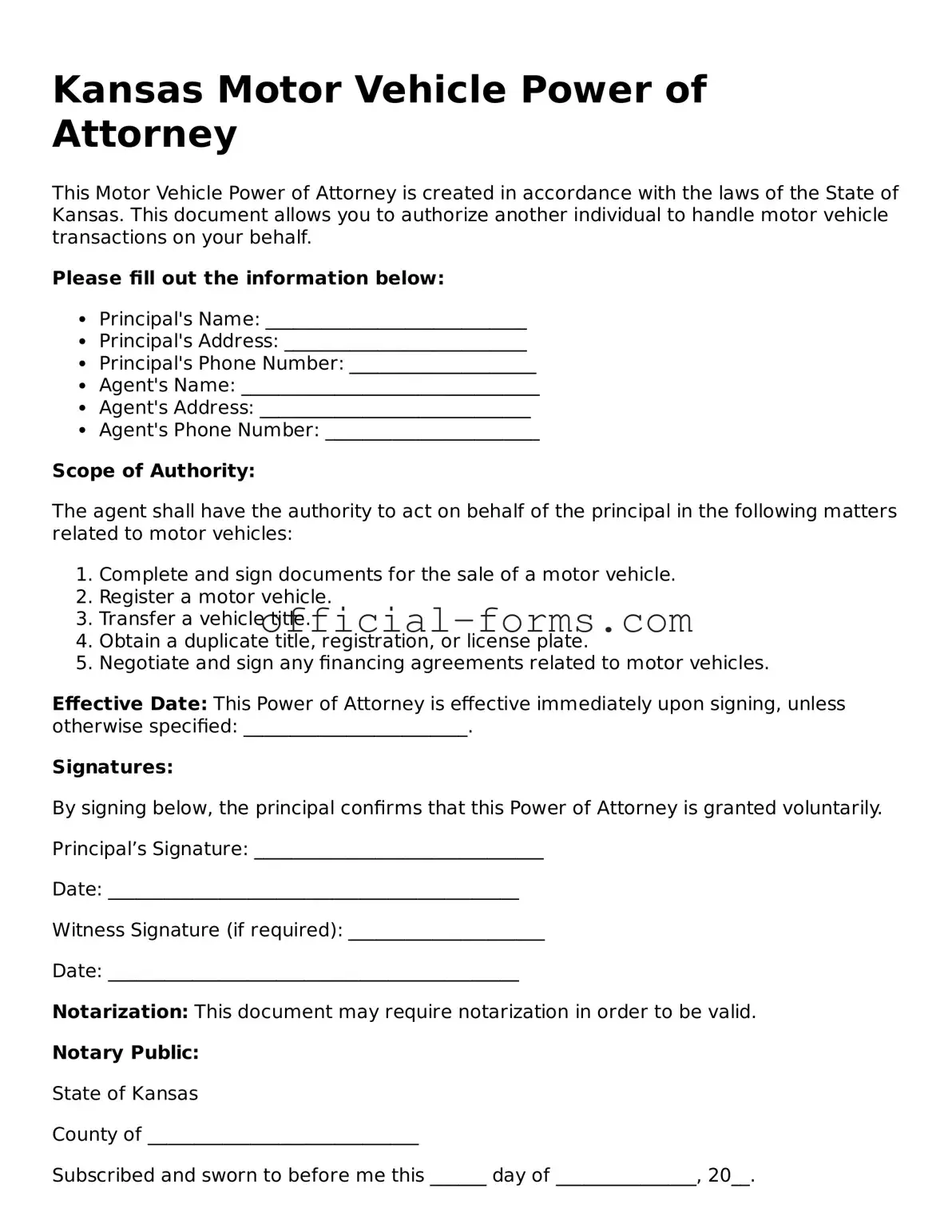Filling out the Kansas Motor Vehicle Power of Attorney form can seem straightforward, but many individuals make common mistakes that can lead to complications. One frequent error is failing to provide complete information about the vehicle. This includes not specifying the Vehicle Identification Number (VIN), which is crucial for identifying the vehicle in question. Omitting this detail can render the document ineffective, as it may not clearly indicate which vehicle the power of attorney pertains to.
Another mistake often seen is neglecting to sign the form in the appropriate places. The form requires signatures from both the principal and the agent. If either party forgets to sign, the document may be considered invalid. Additionally, signatures must be dated. A lack of a date can raise questions about the timing of the authority granted, which could lead to disputes later on.
People sometimes overlook the importance of having the document notarized. In Kansas, notarization is often required to ensure that the signatures are authentic. Without a notary's seal, the form may not be accepted by the Department of Motor Vehicles (DMV) or other entities. This step is crucial for the legitimacy of the power of attorney.
Inaccurate designation of the agent can also create issues. Individuals may choose someone who is not trustworthy or capable of handling the responsibilities outlined in the form. It is essential to select an agent who understands the duties involved and can act in the best interest of the principal. This decision should not be taken lightly.
Another common mistake involves not specifying the powers granted to the agent. The form allows for a range of powers, and failing to clearly outline these can lead to confusion. If the agent is unsure about their authority, it may hinder their ability to act effectively on behalf of the principal.
Lastly, individuals sometimes forget to keep a copy of the completed form. Retaining a copy is important for both the principal and the agent, as it serves as a reference for the powers granted and the responsibilities assigned. Without a copy, misunderstandings may arise, and the effectiveness of the power of attorney could be compromised.
